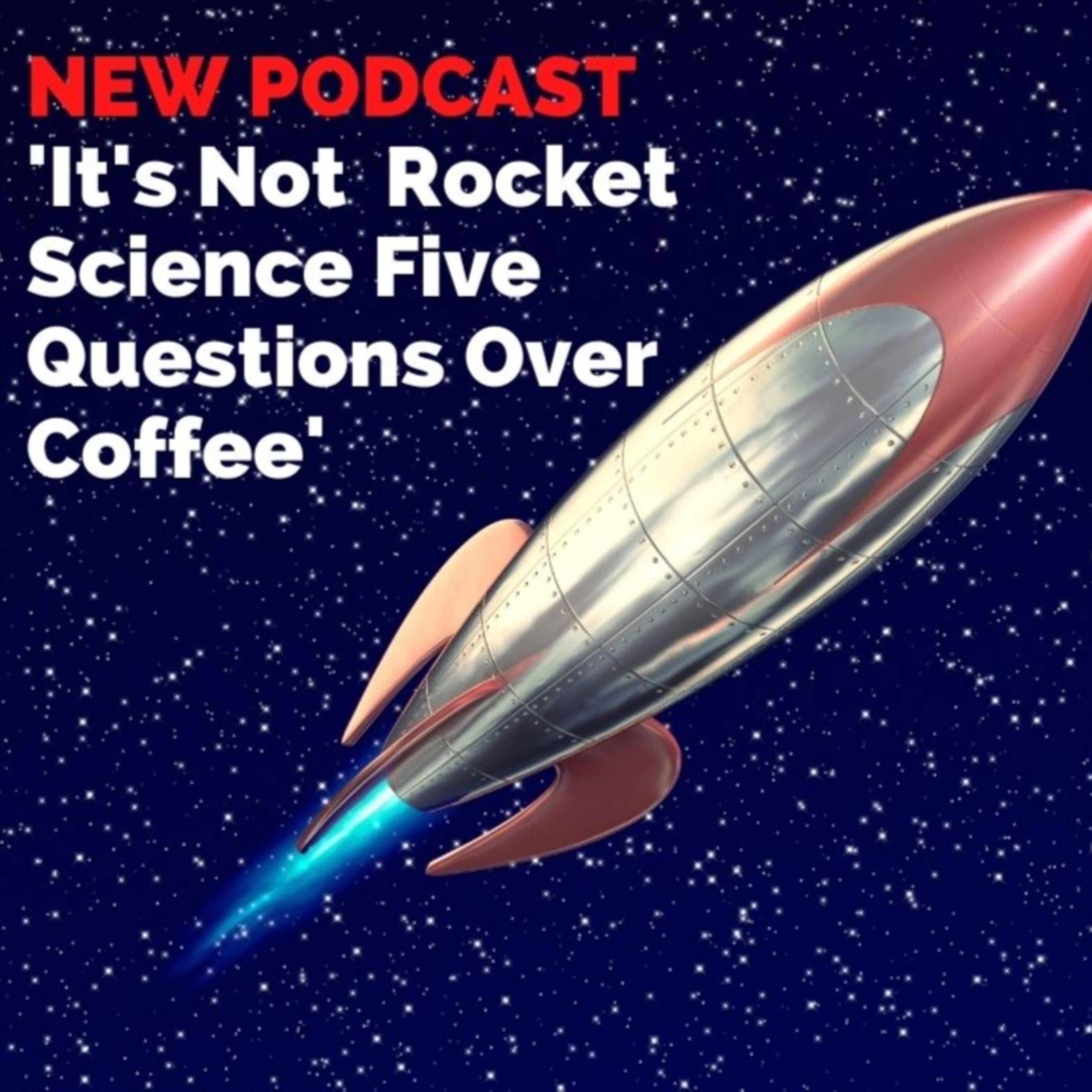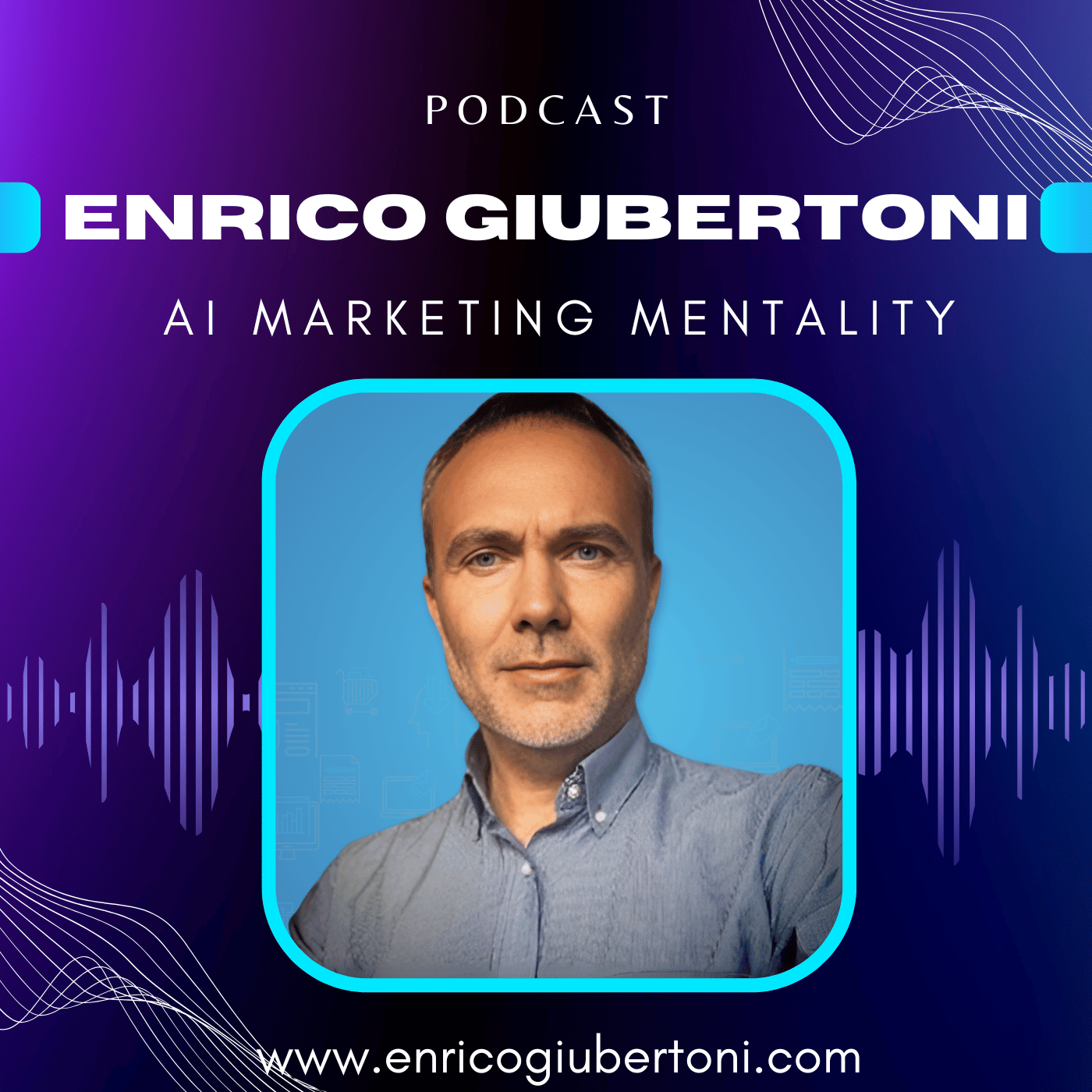 |
It's Not Rocket Science! Five Questions Over CoffeeHelping business owners explode their business growth Author: The Complete Approach
The mission of It's Not Rocket Science! is to bring a new idea for building business to growth-hungry business leaders and owners who want to do more with less time and so increase their business and influence. We deliver actionable ideas using our five questions over coffee. thecompleteapproach.substack.com Language: en Genres: Business, Entrepreneurship, Marketing Contact email: Get it Feed URL: Get it iTunes ID: Get it |
Listen Now...
Five Questions Over Coffee with Kyle Beltle (ep. 137)
Episode 137
Thursday, 4 December, 2025
Who is Kyle?Kyle Beltle is a sought-after advisor for professional coaches and consultants whose businesses are flourishing in the high six figures. Having worked extensively with clients eager to reclaim their time, Kyle specializes in navigating the twin challenges his clients so often face: “tax FOMO” (the fear of missing out on tax deductions) and analysis paralysis. He knows all too well how the constant swirl of social media tips and advice from well-meaning friends can leave entrepreneurs unsure of where to start and anxious they might be missing out. Through patient guidance and hands-on support—including welcoming endless client questions at kickoff meetings—Kyle helps business owners cut through the noise, find clarity, and confidently optimize their financial strategies.Key Takeaways00:00 Coaching Clients’ Tax Woes Solved04:39 Experience Over Price09:06 Focusing Intentionally in Business12:55 Maximize 401(k) with Profit Sharing15:58 “Subscribe for Podcast Updates”_________________________________________________________________________________________________Subscribe to our newsletter and get details of when we are doing these interviews live at www.systemise.me/subscribeFind out more about being a guest at : link.thecompleteapproach.co.uk/beaguestSubscribe to the podcast at https://link.thecompleteapproach.co.uk/podcastHelp us get this podcast in front of as many people as possible. Leave a nice five-star review at apple podcasts : https://link.thecompleteapproach.co.uk/apple-podcasts and on YouTube : https://link.thecompleteapproach.co.uk/Itsnotrocketscienceatyt!Do You Need a P.A.T.H. to Scale?We help established business owners with small but growing teams:go from feeling stuck, sceptical, and tired of wasting time and money on false promises,to running a confident, purpose-driven business where their team delivers results, customers are happy, and they can finally enjoy more time with their family -with a results-based refund guarantee: if you follow the process and it doesn’t work, we refund what you paid.This is THE P.A.T.H. to scale your business.————————————————————————————————————————————-TranscriptNote, this was transcribed using a transcription software and may not reflect the exact words used in the podcast)SUMMARY KEYWORDStax strategy, tax planning, proactive CPA, tax deductions, analysis paralysis, tax FOMO, professional coaches, consultants, high six figure business, time management, business finances, business owner, real estate investment, rental property, multi state tax return, online tax software, premium guidance, tax mistakes, tax savings, 401k, retirement planning, profit sharing, S corp, employee benefits, pension contributions, business tax, cash flow management, VAT bill, financial planning, tax professional, small business taxSPEAKERKyle Beltle, Stuart WebbStuart Webb [00:00:03]:Okay, we’ve gone live without the stream coming in, which is really interesting. So welcome to It’s Not Rocket Science. Five questions over coffee. I’m here with Kyle Bentley Beltly. Sorry, I’m gonna, I’m gonna get that wrong. Kyle. Apologies. Kyle Beltley.Stuart Webb [00:00:22]:Kyle is the owner of ProActive CPA. Kyle is going to talk to us about some really interesting things about how we manage our finances, manage tax, etc. Carl, welcome to It’s Not Rocket Science. Five questions over coffee. I hope you’ve got your coffee in front of you today.Kyle Beltle [00:00:38]:Ready to go.Stuart Webb [00:00:39]:Terrific mug, terrific mug. Let’s, let’s talk briefly about how you’re, who is, who is the person you’re trying to help? What’s the problem they’ve got? So that we can sort of, as we were listening to you describe this, we begin to get a sense of is this me that Kyle is talking about?Kyle Beltle [00:01:00]:Sure, sure. So my clients are professional coaches and consultants running businesses that are generating high six figures of sales and they’re people who are looking to buy back their time. I would say that the primary issue that people come to me with and I help them solve, it’s kind of a twofold. It’s first off, it’s what I like to call tax fomo, fear of missing out, and it’s analysis paralysis. So with the tax fomo, we are inundated with social media posts on tax tips, our neighbors giving us tax tips, our crazy uncle at the family dinner is giving us. And there’s this fear that I’m missing out on these deductions that everybody else knows about. But where do I even, where do I even get started? You know, this, this analysis paralysis. And a great example of this is I just started working with a client there and as we were getting ready for our kickoff meeting, he said, I hope you don’t mind, I just jotted down a few thoughts.Kyle Beltle [00:02:10]:Well, so Stewart, this guy had composed this entire Google Doc of just all the things that he’d been coming across. And you know, does this apply to me? Where do I start? And so what I do with my clients is distill all that into a crystal clear tax strategy plan for them where they know, a, this applies to me, B, this is how to take advantage of it, and C, here’s the savings I’m going to get from it.Stuart Webb [00:02:38]:So let’s just, let’s try and explore a little bit then on what are the things. I mean, that guy obviously had ideas about what he wanted to do, the problems that he knew had. He Tried anything. What were the things he tried to do to overcome this problem before turning to Kyle and say, carl, can you help me?Kyle Beltle [00:02:57]:So fortunately he hadn’t tried anything and sadly that’s not always the case. I had a client, I’ll call Ian, who just started working with me the beginning of this year and he had heard, real estate’s a great investment. I’m going to get into real estate. And he ended up purchasing a rental house that was out of state. So now he’s preparing a multi state return and he has to set up a rental property. He was using an over the counter online tax product there. And you know the saying, garbage in, garbage out. Well, the data that he was putting into the software was not correct.Kyle Beltle [00:03:47]:He ended up missing out on a lot of deductions around that rental property. And so when we first started working together this year, I went back, took a look under the hood of the return last year and was able to help him get that rental property set up properly. And the savings, the actual tax savings that he experienced as a result of that were twice what I was charging him there. And so, you know, I have a colleague, Rajo Jose, who likes to say premium guidance cost a lot less than premium mistakes. And so certainly don’t, don’t try to DIY things when you’re working with a complex tax situation.Stuart Webb [00:04:39]:I’m going to have to agree with you, Carla. I know one of the early lessons I was taught when I was a very young business owner was people forget the price long after they’ve forgotten the lack of quality, so long after they’ve remembered the lack of quality. So you know, the, the problem that we all try and think of is this may or may not take me a lot of time, but you’re not dealing with, you’re not dealing with something which, which is, you know, so much time based, are you? Although they are paying for your time, they’re paying for the years of experience which you bought into the, you’ve used as your education and your experience in order to come back and go, this is how much it’s valid, the value is to you. This is not about me taking 15 minutes over this. This is 15 years of my life that’s taught me how to do this for you.Kyle Beltle [00:05:25]:100%. 100%. And that’s not even mentioning the time that they would need to take away from their core business.Stuart Webb [00:05:33]:Absolutely.Kyle Beltle [00:05:34]:To try to learn this or to even, even to execute it.Stuart Webb [00:05:38]:Absolutely. So I think, Carl, you’ve been very kind to the audience. You have Got a giveaway. And this will be something which is in the vault that we have, which is the systemized me free stuff. So describe what this is, a PDF, I think, which is going to be a great asset to a lot of people. Tell us what’s in this PDF and how it benefit them.Kyle Beltle [00:06:04]:So, as I said at the top, one of the issues that so many of my prospects and so many of my clients come to me with is just saying, where do I even begin? So I put together a handout here of my six favorite tax strategies that most people can take advantage of. And so I would download that there and take it with you next time you’re meeting with your tax professional to see which one of these can we put into play to maximize my savings.Stuart Webb [00:06:34]:And I would, I’d hate to, to prejudice this, but if somebody comes along and finds they’re only using five of the six, they may need to have a word with you anyway.Kyle Beltle [00:06:43]:Yes, absolutely, absolutely.Stuart Webb [00:06:46]:Okay, terrific. That’s a brilliant. And I, I’ll just repeat, if you go to systemize me free hyphen stuff, you will find that immediately. You can go and download that now and go get that from, from that vault and, and you will be able to get hold of Kyle’s top six strategies. Have a feeling he may have more than six in his bank. But that’s, that’s the top.Kyle Beltle [00:07:09]:There may be a bonus. There may be a bonus one.Stuart Webb [00:07:12]:I love it. I love it. I love it. Kyle, tell us a little bit. You know, how did you become the, the expert that you are on tax? This doesn’t happen overnight. It certainly doesn’t happen unless you, you set out intentionally to understand these things.Kyle Beltle [00:07:28]:Yeah.Stuart Webb [00:07:28]:Is there a book, a course or something like that that took you to this, this place? That’s.Kyle Beltle [00:07:34]:That is a great question, Stuart. And I love when you ask your guests this because you’re always, always finding great books, great programs through this, and I’ve read a lot of books over the years and just trying to think distill it down to one. Ah, it’s really tough. But if I had to choose, I would say that the most impactful program in my life has been Earl Nightingale’s the Strangest Secret. Are you familiar with it by any chance?Stuart Webb [00:08:05]:It’s not one I know. It’s not one I know.Kyle Beltle [00:08:08]:So I encourage everyone out there, go look it up on YouTube. The strangest secret. It’s originally, I believe it was a radio broadcast that Earl gave. It’s only about 30 minutes. It’s very concise. Very to the point. And spoiler alert. The strangest secret is that we become what we think about most of the time.Kyle Beltle [00:08:34]:Oh, and, you know, certainly that is by, you know, no means new to any of your listeners, I’m sure. But for me, I came across this early in my career. It was one of the first times I was really ever exposed to the power of being intentional with your thoughts and setting goals there. And so even to this day, I still find it as a great reset any. Anytime I’m stuck to listen to Earl Nightingale’s the Strangest Secret.Stuart Webb [00:09:06]:That is a great, great tip, Carl. I thank you for that one because you’re absolutely right. Too often we are, we’re not intentional with our businesses, are we? We are distracted. I often see business owners, and I deal with business owners most of my day, and I find myself saying, well, why are you doing it that way? And the answer is sometimes it’s sort of like, well, I just can’t stop thinking about this. And unfortunately you go, well, you’re missing out on a bunch of other things which actually you should be focused on and this should not be even in your thing. So you, you tend to end up doing it because you’ve just got locked in a cycle of focus that is the wrong one. And to switch the focus to what you should be focused on is much more important.Kyle Beltle [00:09:53]:Yeah. If you’re just reacting to the latest email, the latest text message that comes across your inbox there. Yeah, you’re absolutely right. You’re going to get stuck in a cycle that is not productive and not product. You know, really building up your business to the best that it can be.Stuart Webb [00:10:12]:And this is where you have to start thinking a little bit about, like the, the future of your business by focus on those tax strategies which actually enable you to free up the cash, free up the investment that you might need in order to move the business forward.Kyle Beltle [00:10:26]:Yeah, yeah, absolutely. May feel like you’re taking some time, some invaluable time out of your schedule to invest one, two, maybe even three hours to sit down with your tax pro and really map out the upcoming year, what you can take advantage of, what you can’t. But the clarity that I have seen that give to my clients is worth its weight in gold and more than comes back to them in time savings.Stuart Webb [00:10:57]:Yeah, I’m gonna, I’ll tell a small story here. It’s one that’s rather specific to the. But I came across a business just recently. The business had hit a real problem. They had a real cash flow problem. And I sort of said, what’s the real reason for the cash flow problem? Wasn’t very obvious from the discussion. They went, we forgot a VAT bill, value added tax bill. We forgot this tax bill was coming in.Stuart Webb [00:11:20]:We completely missed swiped our cash flow. We’re now in deep trouble because we had no idea that it was coming in. And I looked at them and I basically said these bills are paid once every quarter. It’s like Christmas. It’s going to be on the same day, same time every year. What happened? We didn’t have a plan. A one or two hour meeting with an attacked professional to just work out where that was would have solved a whole heap of problems for that business.Kyle Beltle [00:11:52]:Yeah, absolutely, absolutely not. Not to mention just the fact that they could have set up a very simple system to, to remind them about that or to automate it there.Stuart Webb [00:12:04]:Yeah, absolutely brilliant, Kyle, I guess we’re getting towards the end of this and I’m going to let you go so you can get back to helping other tax professional people get their taxes in order. Professionals get their taxes in order. Carl, there must be a question that you’re thinking, well, he still hasn’t asked me the real killer one and obviously I might, I might think of it and probably I’m not going to because I’m a person of very little brain. So what’s the one question that I should by now have asked you? And as you know what that question is, you better answer it for us as well.Kyle Beltle [00:12:38]:Yeah, absolutely. Well, one of the questions that I was waiting for was what is one tax strategy in particular that could be a quick win for someone today?Stuart Webb [00:12:50]:I am so glad I didn’t ask that question because that is such a good question.Kyle Beltle [00:12:55]:And I got to tell you, Stuart, I’ll preface this, I know this, this answer, it’s not exciting, it’s not revolutionary here, but it is, it truly is powerful. And that is for the listeners here in the US to max out your 401k retirement plan there. Now most people, Stewart, very familiar with having some money taken out of their, their paychecks there to put in the 401k and that’s great and that everyone should be doing that. However, I’m always surprised that more business owners don’t know about the profit sharing options that most for 1k plans have. And the reason that the profit sharing is so powerful, Stuart, is that it is money that the business elects to put into their employees 401k plans. And it’s powerful because if the owner owns a company that’s taxed as an S corp here in the US that owner will be on payroll and they’ll be able to put additional money into their personal 401 while the business gets a tax deduction for it. It’s also a great way for employers to reward their employees by giving them a little bit of a bonus that they don’t have to pay payroll taxes on. The employees don’t have to pay income taxes on there.Kyle Beltle [00:14:26]:So using the profit sharing component of your 401k to really max it out is a very powerful tax strategy that a lot of businesses will will be able to implement this year and get a quick win.Stuart Webb [00:14:40]:Carl, it will not surprise you to learn that is not a strategy that is just related to the US that is also many other countries. Optimizing and maximizing the amount of money you put into a pension is often the best way of saving tax for the business, but also, as you just said, allowing the employee, even if the employee is the chief executive, to get ready for a time when they need to step away from the business anyway and have still got the money coming in that they should have.Kyle Beltle [00:15:11]:Yeah, absolutely, Stuart. You know, as I said, it’s not a particularly exciting strategy, but it’s, it’s been my experience as a professional that oftentimes it’s the simple disciplines.Stuart Webb [00:15:23]:Yeah.Kyle Beltle [00:15:23]:Simple steps that we repeat day after day within our businesses that in the long run provide the biggest wins for us.Stuart Webb [00:15:32]:Kyle, that is a great message to end on because I think it is a universal truth. Business is actually really simple. If you boil it down, it’s about making a customer and keeping that customer happy. And hey, what could you do better than doing that with your employees by giving them tax breaks and money for when they retire as well. Absolutely brilliant. Absolutely brilliant. Kyle, thank you so much for spending a few minutes.Kyle Beltle [00:15:56]:Thank you, Stuart. It’s been a blast.Stuart Webb [00:15:58]:I’m. I’m just gonna, I’m just gonna encourage people. If you’re listening to this, if you’re watching this, if you, if you’re seeing us live, if you’re seeing this in the recording or listening to this in the recording, just please subscribe to the. To the main with the Systemize me forward/subscribe systemize.me forward slash subscribe. You will get an email once a week which will intel tell you who’s coming up on the podcast so that you can join live. Ask questions if you want, get on there. If you’ve got boring, know, really burning questions, that’s the time to sort of ask it to experts such as Kyle who’s been with us today talking about his stuff. And please go to Systemize me free hyphen stuff to get Kyle’s really valuable six plus special special offer.Stuart Webb [00:16:39]:Download as soon as you can. Kyle. Kyle Beltley. I hope I’ve got it right. At long last.Kyle Beltle [00:16:45]:Yes.Stuart Webb [00:16:45]:Thank you for being with us.Kyle Beltle [00:16:47]:Thank you for having us. Get full access to It's Not Rocket Science! at thecompleteapproach.substack.com/subscribe












